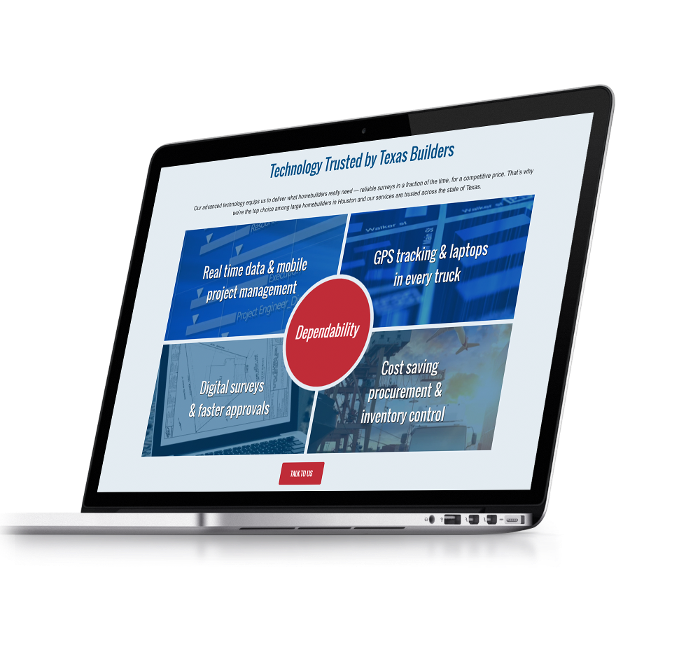Marketing Services Buyers Guide
When it comes to finding the best approach to improving the performance of your marketing and sales efforts, there are many options. Typically, many small-to-medium-sized businesses (SMBs) turn to one of the following as solutions:
For over two decades, we've been at the forefront of transforming brands into powerful business assets. We don't just help you grow; we refine your identity to resonate with your audience, elevating profitability and enriching your entire business ecosystem.
So, what solution is the best fit for me?

With any of these solutions, it is vital to consider your overall strategy as explained in this article.
Below are key elements to consider that should help you in your assessment of these options.
Freelance Solution Providers & Platforms (Outsourcing)
Vendors are hired on an as-needed basis: Marketing Consultant, Graphic Designers, Web Designers, SEO Specialists, Social Media Experts, Email Marketing Platforms, Marketing Consultants, Video Production Companies, Inbound Marketing Specialists, Event Planners, Media Buyers, Pay-Per-Click (PPC) Specialists, Copy Writers, Bloggers, Photographers, Public Relations Companies, Data Analytics Experts, Research Companies, Sales Consultants
In-House Marketing & Outsourced Creatives
Usually, a Marketing person handles all things marketing related and uses a variety of the above freelance providers on an as-needed basis.
Outsourced Full-service Agency
Smaller companies will many times task their VP of Sales and/or President/CEO, while larger companies frequently have an experienced Marketing Director work with the C-Suite to develop their marketing and sales strategies. They will then retain a full-service marketing/advertising agency that handles all the creative and implementation efforts.
In-House Team
Typically this consists of a Marketing Director and a few creatives: Graphic Designer(s), Web Designer(s), and copywriter/communications. Many times team members wear multiple hats. May on an as-needed utilize freelance specialists.
Smart-Sourcing Growth Agency
A newer hybrid of the full-service solution with dedicated experts across all disciplines working on a fractional basis in a customized configuration for the business situation.
10 Key things to consider when evaluating options for improving your marketing and sales efforts
Base costs
In many cases, the base costs are a substantial element during the evaluation process and are represented in terms of hourly rates, packaged project pricing, monthly retainers, or salaries. Discerning the real ‘value’ you receive from your investment is the greatest challenge you face when evaluating even apples-to-apples proposals in terms of Base Cost. It may feel good to see a low hourly rate, but if it takes the low-cost provider significantly longer to complete the effort to your satisfaction (Surprise, here’s your ‘Change-order), well you know the outcome.
It may also feel good to hire an internal team to replace the higher base costs of an outside team, but there are caveats to this approach as well. The hidden costs of internal teams must be evaluated closely, and the potential for waste (underutilized time) and myopia (insider blindness) can greatly inhibit the actual ROI of your efforts.
In most cases, the over-valuation of Base Costs in the process frequently ends badly with efforts that may check the completed box, but don’t drive growth or long-term value. Often the highest-priced option isn’t necessarily likely to deliver the greatest value either. Big offices and staff don’t equate to big results. Overhead impacts the Base Costs and Total Costs. So, either end of the Base Cost spectrum probably needs to be considered from a long-term viewpoint.
It’s easy to revert to over-valuing Base Costs when dealing with unfamiliar solutions and tactics. This is a great reason to find an experienced Marketing & Sales leader or Consultant to assist in your evaluation process. It is very common for SMBs to fall into either of these traps, so just be careful.

B2C companies spent slightly more on average, with product companies spending 9.6% and B2C services companies spending 11.8%. (Source: SBA.gov)

Time investment by stakeholders in your company
This element is probably the most significant contributor to the Hidden Costs of improving your marketing and sales efforts. Typically, for SMBs the stakeholders are owners and/or they occupy the C-Suite. While the marketing and sales issues facing your company are why you’re here reading this, the right solution shouldn’t become a distraction to your mission-critical responsibilities. That said, many SMBs under-estimate the amount of time they will need to allocate in order to solve their marketing and sales challenges. Minutes can seem like hours when you’re explaining the basic elements of your value proposition multiple times, or if you’re trying to manage a project that is lagging as your deadline looms.
Appropriateness of strategy & tactic(s)
Strategy and tactics will make or break your marketing and sales efforts, yet many SMBs under-value getting outside help with these critical activities and decisions.
If you have realized underwhelming results form your marketing efforts, then this area is the likely cause. Many SMBs rely primarily on their internal insights to drive their strategies. Often, this is driven by their perspective that their business and situation is ‘different’ and outsiders won’t discern these differences adequately.
Since 2001 we have heard these comments countless times, “We know our market and what they want, we’ve been doing this for years and marketing never played a significant role in the past…” or “Our buyers know what they want, we just need some new materials to look better,” or “Everyone says we need to (Insert Latest Fad), so we’re looking into what that looks like.” Obviously, all of these deny the realities of real challenges they face and exemplify a tactic first approach. Such efforts consistently end in a lot of things being created with little real result other than checkboxes checked.
Another pitfall related to strategy and tactics is that as you explore marketing and sales services, you will inevitably enter the ‘Specialist Zone’, a place where you know much less about the subject at hand than the specialist. You may grow enamored with the depth of their knowledge and feel an ‘Aha-moment’ that appears transcendent. But keep in mind that the specialist is seeing the full picture through a narrow window, their specialty. As they see it, the narrow window is the key, and it might be integral, but the question you need to ask is, “How does this fit into my whole picture?” Over-allocation to a specialist’s focus can inhibit your overall results. So remember, there is no silver bullet.

Timeline to completion
This guide focuses on the typical range of time it takes to complete an effort. The range is frequently counter-intuitive as it is largely driven by the systemization and focus of the specific providers.
Experience plays a significant role in the predictability of this factor. The scale of the organization or team may be less critical than expected and often less is actually more in terms of predictability.
Quality of finished project
Quality is always a relative term that too frequently is ‘in the eye of the beholder’ rather than a measured assessment. Here developing the metrics that matter is essential.
As an example, if it’s a website, what are you aiming to accomplish? Increased lead generation, improved customer service, lead nurturing, and sales conversion? In each case develop SMART Goals prior to evaluating options. If you need help, get some from an experienced source before you create a Scope of Work (SOW).
In this instance, we are basing the ratings on the scale on various industry best practice standards as a baseline. The (Icon) scale is based on a range of reviews and sources on the Quality of the finished product typically associated with each option’s performance from low-to-high.

Brand perception improvement or ‘The Eye Test’
SMBs too frequently evaluate the improvements in their Brand Perception resulting from new content: websites, brochures, videos, etc., by anecdotal feedback from their close connections: vendors, customers, friends, and family.
This feedback is generally a function of ‘The Eye Test’ or simply how does it look? Is it improved? Is it cool, provocative, clever, trendy? While any of these may contribute to the overall Brand Perception, they don’t constitute a given that your efforts will produce meaningful results or value.
Occasionally, you see lightning in a bottle, creative or approach that redefines an offering, e.g., “Got Milk?” or the ALS Ice Bucket Challenge, but these outliers are incredibly infrequent, and few are initiated by SMBs. For SMBs, yes it needs to be creatively engaging, but typically the look is not going to drive results. It can inhibit them if done poorly, but being creative for creativity's sake is rarely a good investment.
Total costs: Apparent & Hidden
This topic is one that a whole book could be written about…actually many have. Keeping it simple, the typical hidden costs are driven by: internal time needed to manage and guide efforts, non-productive time of internal team, benefits, overhead, change orders, opportunity costs of misapplied tactics. The hard part is getting a clear picture of the whole iceberg, not just the tip.
Read more on how time can often be an overlooked component of hidden cost.
Alignment between
Marketing & Sales

Here is where most SMBs miss the opportunity to maximize their ROI from their marketing and sales improvement efforts. Too frequently there is a disconnection between the focus, content, and execution of their marketing efforts and their sales approach. These two must be absolutely in alignment in order to realize maximum returns. If sales ever utter that their marketing just doesn’t capture who they are or what they talk to customers about, then your efforts have failed. If marketing ever complains that sales doesn’t follow-up on the leads they generate, then your efforts have failed.
Much like the Yin & Yang each are dependent on the other, and more importantly, your customer’s experience is dependent on both. As you evaluate solutions, you must take how each option enables these two functions to align and flourish. This takes experience, effort, and coordination. Keep this in mind as you decide the right mix of internal and external help you need.
Many SMBs who still exist after 5 years (Since 90% fail in the first 5 years) have developed an adequate sales approach, but if they’re evaluating busting through the ‘glass ceiling’ and reaching a new level, they frequently reassess their marketing efforts. Unfortunately, many don’t recognize the importance of developing their marketing and sales strategies in sync, and as a result, they end up with new content that looks nice but is not necessarily helpful to their sales efforts other than they look bigger and better than before.

Likelihood of transformative outcomes
Great marketing and sales efforts are equal parts art & science. What defines transformative is dependent on the state of the enterprise prior to the efforts.
In some cases, it may represent the development of a true functioning marketing effort, in others it might be boosting revenue by a 3x multiple. In all cases it represents a substantive and sustainable change in the operational and profits performance.
Long-term value generated: ROI, Profits, Company Valuation
Rarely do SMBs associate their marketing services needs with long-term value generation. They might on an anecdotal level hope for some residual value in terms of increased revenue or profits, but few see these investments as company valuation drivers.
This is despite reams of evidence that companies with exceptional marketing and sales systems command several times larger multiples in valuations, and this is not just true of technology plays. SMBs with micro-market strong brand positions and solid sales systems experience similar exceptional valuations.
So, how do you develop evaluation criteria to assess the options in front of you? For starters, consider what questions the options ask about your situation. Are they focused on how their specialization is to be implemented? Are they delving into the core drivers of your customers? How deep do they go into your company’s inner workings, your competitive market, your processes? It should be clear if their focus is on getting your business or overcoming your obstacles and achieving sustainable results.

Additionally, here are the latest statistics on Marketing in 2020 as you consider what solution is the best fit for your company.

LEARN WHAT IT MEANS
TO BE ON-TARGET!
Whatever you're up against, rest assured that after 20 years we've probably seen it. Let's connect and get to know each other.

GET AN ESTIMATE
Discover how we can transform your project ideas into reality. Start with a free, no-obligation estimate today..